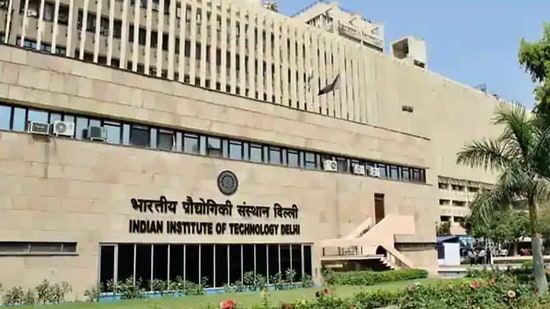High particulate matter concentration at Delhi schools, colleges: IIT Study
Delhi schools, colleges top list of buildings with high particulate matter concentration: IIT study
Schools and colleges in Delhi top the list of buildings that have higher Particulate Matter (PM) concentration levels, a study on indoor air quality by the Indian Institute of Technology (IIT) Delhi has found.

According to the study, the concentration levels of PM10 and PM2.5 in the buildings were recorded 2-5 times higher than the permissible limits set by the Central Pollution Control Board (CPCB) for ambient air quality in India, 100 μg/m3 for PM10 and 60 μg/m3 for PM2.5 (NAAQS, 2009).
The levels are 10-15 times higher than WHO's 24-hour average limits (50 μg/m3 and 25 μg/m3 for PM10 and PM2.5 respectively) for all monitored buildings (WHO, 2016), it claimed.
The study, titled Project MAQUID (Monitoring of Air Quality in Urban Indoors in Delhi), was conducted on 37 buildings across the national capital, including schools, colleges, hospitals, shopping malls, restaurants, offices and cinema halls (considered to be priority indoor environments where chances of exposure to indoor air pollutants are maximum) during the critical winter period starting from October 15, 2019, to January 30, 2020.
"The educational institutes (schools and colleges) top the list for high PM concentration. Despite ban on tobacco smoking in public spaces, it was observed that people were rampantly smoking in offices, hospitals and colleges. The Total Volatile Organic Compounds (TVOC) levels are also recorded high, with the highest being in hospitals and restaurants due to rampant use of chemical cleaning agents, floor cleaners and cooking oils," the study said.
"The CO2 levels are also recorded high in hospitals, colleges, offices as well as in restaurants due to higher occupancy and inadequate ventilation. Though schools too have higher occupancy but all the selected schools are naturally ventilated so CO2 levels are within the permissible limits except one or two schools.
"The indoor/outdoor (I/O) ratios are calculated for PM10 and PM2.5 in the selected microenvironments. The schools fared the worst with the PM2.5 I/O ratios being reported more than one in selected six schools. I/O ratio more than one indicated the presence of a potential source indoors. After schools, the microenvironments which followed were the colleges, offices, restaurants, hospitals and shopping malls," the study added.
In order to find the quality of air that we breathe while indoor and to generate public awareness about the importance of indoor environment, Centre of Excellence for Research on Clean Air (CERCA), IIT Delhi, the Society for Indoor Environment (SIE), and Kaiterra, an air quality instrument company, conducted a baseline survey on the state of indoor air quality in various buildings across Delhi such as schools, colleges, hospitals, restaurants, residential buildings and cinemas.
Twenty-four-hour monitoring was conducted in most of the selected buildings for indoor air pollutants, including PM10, PM2.5 and TVOC, along with comfort parameters (temperature, relative humidity and CO2 concentrations) using Sensedge air quality monitors from Kaiterra, which is a medium-cost sensor-based monitor designed specifically to measure indoor air quality.
Physical characteristics, such as the number of doors and windows, air purifiers, air conditioning systems, carpets, furniture, photocopiers and printers inside the building, running of diesel generator sets, distance of the buildings from roads with heavy traffic are also recorded during the study.
"The deteriorated Indoor Air Quality (IAQ) with high levels of air pollutants can have much more severe impacts on the health of the people as almost 80-90 pc of our total time is spent in such buildings. World Health Organization (WHO) has designated indoor air pollution (IAP) as one of the four most critical global environmental problems in developing countries," it said.
"However, far less attention has been paid to the IAP issues in urban areas due to complex nature and types of indoor environments, though an equally important issue. Apart from biomass fuel burning, multiple sources of IAPs can co-exist in urban buildings, such as tobacco smoking, building materials, indoor occupant activities and poorly maintained ventilation systems, which can contribute to worse the levels of IAP," the study added.
Discover the complete story of India's general elections on our exclusive Elections Product! Access all the content absolutely free on the HT App. Download now!
Get latest news on Education, along with Board Exam, Competitive Exam, PSEB Result Live and Exam Result at Hindustan Times. Also get latest Job updates on Employment News









